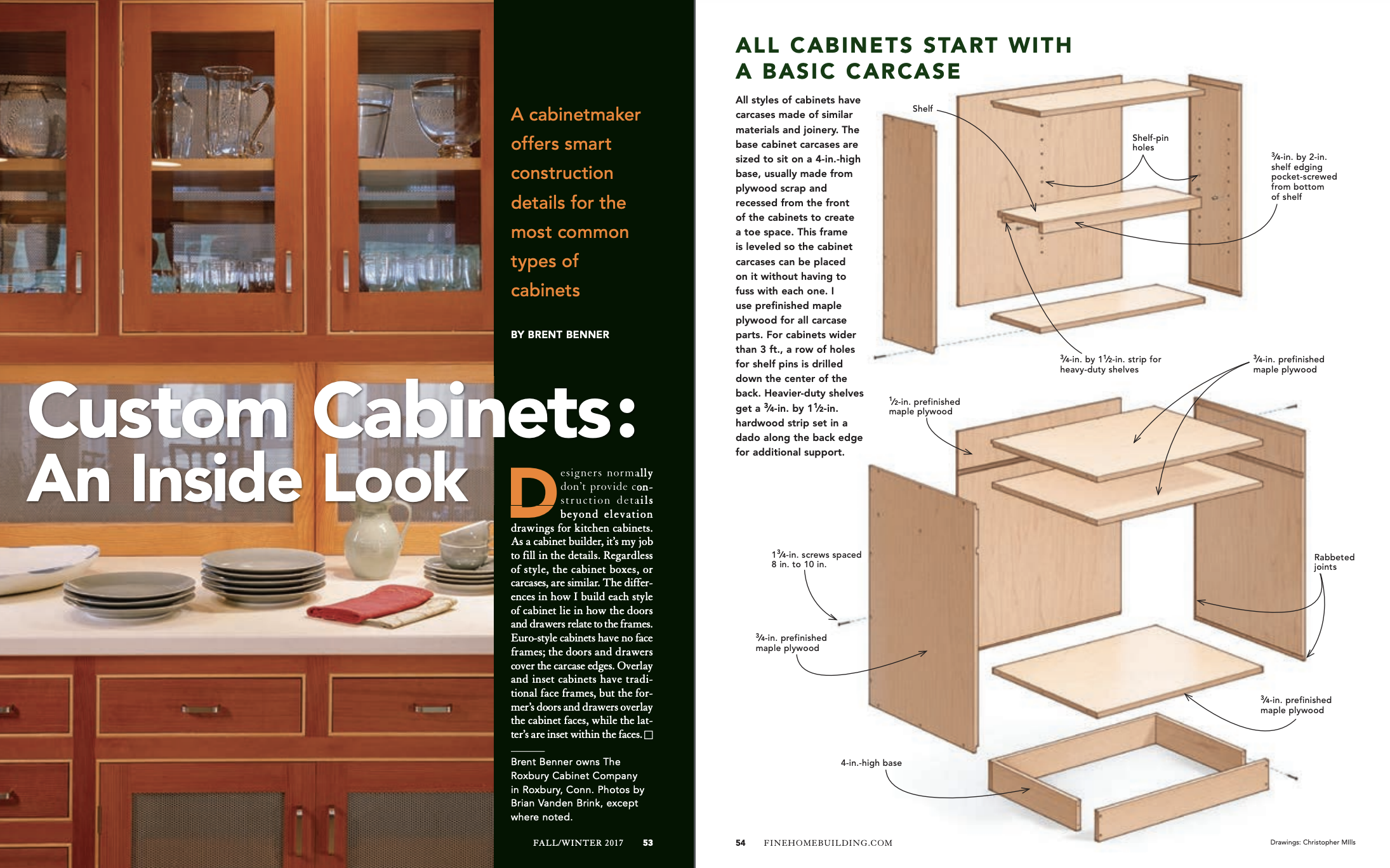An Inside Look at Custom Kitchen Cabinets
A cabinetmaker offers smart construction details for the most common types of cabinets.

Designers normally don’t provide construction details beyond elevation drawings for custom kitchen cabinets. As a cabinet builder, it’s my job to fill in the details. Regardless of style, the cabinet boxes, or carcases, are similar. The differences in how I build each style of cabinet lie in how the doors and drawers relate to the frames. Euro-style cabinets have no face frames; the doors and drawers cover the carcase edges. Overlay and inset cabinets have traditional face frames, but the former’s doors and drawers overlay the cabinet faces, while the latter’s are inset within the faces.
All cabinets start with a basic carcase
All styles of cabinets have carcases made of similar materials and joinery. The base cabinet carcases are sized to sit on a 4-in.-high base, usually made from plywood scrap and recessed from the front of the cabinets to create a toe space. This frame is leveled so the cabinet carcases can be placed on it without having to fuss with each one. I use prefinished maple plywood for all carcase parts. For cabinets wider than 3 ft., a row of holes for shelf pins is drilled down the center of the back. Heavier-duty shelves get a 3⁄4-in. by 1-1⁄2-in. hardwood strip set in a dado along the back edge for additional support.
Euro-style cabinets
Euro-style cabinets lend themselves to sleek, modern decor. The doors hang from Euro hinges, which allow for adjustment in several directions to simplify fitting the doors with even gaps between them. Euro cabinets save labor and material costs by eliminating the face frame. The sides of Euro cabinets screw to each other with no space between, so they offer the most interior space of any cabinet style.
Overlay cabinets
For a traditional look, overlay cabinets have a face frame made from 3⁄4-in. by 2-1⁄4-in. hardwood, joined together and to the carcase with pocket screws. The larger space between doors and drawers makes adjusting them easier than with Euro cabinets. The face frame overhangs the outside and inside of the carcase. This limits access to the interior, and, compared to Euro cabinets, the drawers and interior space will be smaller.
Inset cabinets
Inset doors and drawers offer a custom look, but it’s time-consuming to create even gaps all around, and more expensive to build. To make it easier to mount the drawers and doors, I set the inside edge of the face frame flush with the inside of the carcase, letting it overhang 1-1⁄2 in. to the outside of the case sides. Built this way, inset cabinets have the least amount of interior space.
Brent Benner owns The Roxbury Cabinet Company in Roxbury, Conn. Photos by Brian Vanden Brink, except where noted.
For photos and more info on cabinet topics mentioned in this article, click the View PDF button below:






